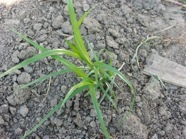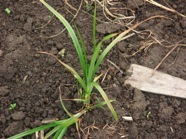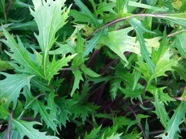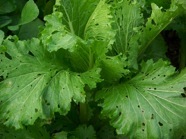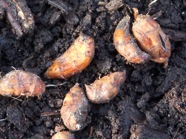
Ch
CHICORY
Chicory used to be grown in old days for the roots, which were burned and used as a coffee substitute. Sometimes this is still being done (some people prefer the taste of this), but the use of chicory (cichorium intybus) is nowadays almost exclusively restricted to the blanched shoots, which are used as a winter vegetable in West-Europe. This blanching technique is in fact a quite recent discovery, made in the botanical garden of Brussels, Belgium, around 1830. The culture of this grew rapidly, and now, 180 years later, it’s probably the main winter vegetable in Belgium.
The seeds are sown during spring, harvested during late autumn or even winter, and they are regrown shortly after (the leaves being cut to about 2 cms from the top), in a warm and dark spot to produce the well-known blanched shoots.
Some old chicory varieties were also grown for their edible roots, but this seems to be completely abandoned.
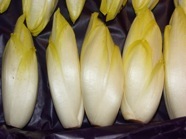
CHINESE CABBAGE
I should have divided this into lots of small sections (maybe I’ll do this one day), because so many distinct varieties exist, they mostly prefer to be sown in late summer or even early autumn, if you sow them too early (spring for example), many of them will bolt instead of giving a nice leaf crop.
Some of my favourites are mizuna, mibuna, komatsuna,pak choi, pe tsai and I can go on for a while...
They are fast-growing and produce an abundant crop of good-tasting leaves, sometimes with some mustard taste included. Most of them are used for stir frying, but they can also be eaten raw.
Some very good recent ones are mispoona (my favourite) and others, try them, you won’t be disappointed!
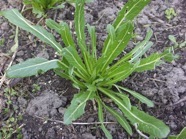
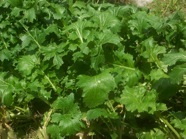
CHINESE YAM
These are one of the prettiest plants in my garden. The foliage of the ramping vine is just wonderful, autumn colours included.
The chinese yam (dioscorea batatas) is decidious, and the root and small air tubers are eaten. The only problem with it :the roots take some years to really size up to something decent, sometimes three, but mostly four years. Apparently this goes a lot faster in areas with hot summers. The vines reach over three metres over here, and they are happy with some support. The plants don’t produce seeds, but are propagated by the small air tubers, or by replanting the top of a harvested root. They seem to be happy in a warm spot, with a bit of moisture.

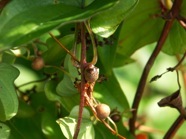
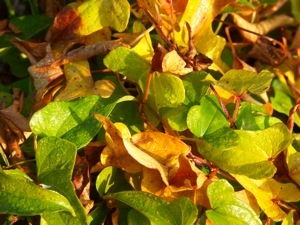
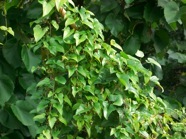
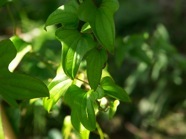
CHIVES
Who doesn’t know or use this herb (allium schoenoprasum)? The fine leaves are used in all kinds af salads, are mixed up with cheese, cream cheese, and so on. They can also be added to warm dishes, but only add them when the cooking has finished, otherwise they will loose their taste.
It’s one of the easiest plants to grow, you can split the plants and replant some , or you can grow them from seeds (be careful here: most allium seeds aren’t really viable for a long time, so sow them quickly, preferably within a year).
A very good, stronger tasting alternative (and as easy to grow ) are Chinese chives (allium tuberosum), a flatter-leafed ‘chive’. These are used a lot in China, and sold on the markets when they have been blanched (mostly in spring), to get a fine tasting vegetable. The flowers of this one are white and only appear in late summer.
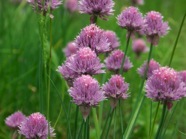

CHUFA
I must begin with a warning here: this can be a very invasive nasty weedy plant, so take care. Personally, I never had any problems with it (probably because mice love the tubers even more than I do...). So, definitely easy to grow, the plants look like a course species of grass, the small tubers are produced abundantly under the surface, they have a chestnut-almond-like taste. In Spain, the chufas (cyperus esculentus) are mixed up with water and all kinds of spices (vanilla, cumin, cinammon, and others), and sold as a refreshing drink, horchata.
The small tubers can be eaten raw, cooked, fried,...They remain crunchy as long as they aren’t cooked for a long time

